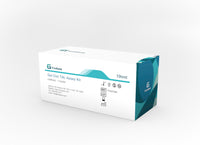
# Endotoxin Testing with LAL Reagents: Principles and Applications
## Introduction to Endotoxin Testing
Endotoxin testing is a critical quality control procedure in the pharmaceutical and medical device industries. These tests ensure that products are free from harmful levels of bacterial endotoxins, which are toxic components of the outer membrane of Gram-negative bacteria. The Limulus Amebocyte Lysate (LAL) test has become the gold standard for endotoxin detection due to its sensitivity and specificity.
## Understanding LAL Reagents
LAL reagents are derived from the blood cells (amebocytes) of the horseshoe crab (Limulus polyphemus). These reagents contain a clotting enzyme system that reacts specifically with bacterial endotoxins. When endotoxins are present, they trigger a cascade of enzymatic reactions that result in gel formation, color development, or turbidity, depending on the test method used.
### Types of LAL Reagents
There are three main types of LAL reagents used in endotoxin testing:
– Gel-clot LAL: The traditional method that forms a visible gel clot in the presence of endotoxins
– Chromogenic LAL: Measures color development from a synthetic chromogenic substrate
– Turbidimetric LAL: Measures turbidity caused by the formation of insoluble coagulin
## Principles of LAL Testing
The LAL test works based on a highly sensitive enzymatic cascade reaction. When endotoxins come into contact with the LAL reagent, they activate Factor C, which then activates Factor B. This leads to the activation of the proclotting enzyme, which converts coagulogen to coagulin, forming a gel clot.
### Key Reaction Steps:
1. Endotoxin activates Factor C
2. Activated Factor C activates Factor B
3. Activated Factor B activates the proclotting enzyme
4. The proclotting enzyme converts coagulogen to coagulin
5. Coagulin forms an insoluble gel
## Applications of LAL Testing
LAL reagents are widely used in various industries for endotoxin detection:
### Pharmaceutical Industry
– Testing parenteral drugs and medical devices
– Quality control of water for injection (WFI)
– Monitoring manufacturing environments
### Medical Device Industry
– Testing implants and surgical instruments
– Ensuring biocompatibility of materials
– Validating cleaning processes
### Biotechnology
– Testing recombinant proteins and vaccines
– Monitoring cell culture media and buffers
– Quality control of biological products
## Advantages of LAL Testing
LAL reagents offer several advantages over traditional rabbit pyrogen testing:
– Higher sensitivity (detects pg/mL levels of endotoxin)
– Faster results (typically 15-60 minutes)
– More cost-effective
– Requires smaller sample volumes
– Quantitative results with chromogenic and turbidimetric methods
## Regulatory Considerations
LAL testing is recognized by major pharmacopeias and regulatory agencies:
– United States Pharmacopeia (USP)
– European Pharmacopoeia (EP) 2.6.14
– Japanese Pharmacopoeia (JP) 4.01
– FDA guidelines for endotoxin testing
## Future Perspectives
As the demand for endotoxin testing grows, researchers are exploring:
– Recombinant Factor C (rFC) as an alternative to LAL
– Automated testing systems for high-throughput screening
– Improved detection limits for novel therapies
– Sustainable harvesting practices for horseshoe crabs
## Conclusion
Keyword: LAL Reagents for Endotoxin Testing
LAL reagents remain the cornerstone of endotoxin testing in pharmaceutical and medical device manufacturing. Their sensitivity, specificity, and regulatory acceptance make them indispensable tools for ensuring product safety. As technology advances, we can expect continued improvements in endotoxin detection methods while maintaining the reliability that LAL testing provides.